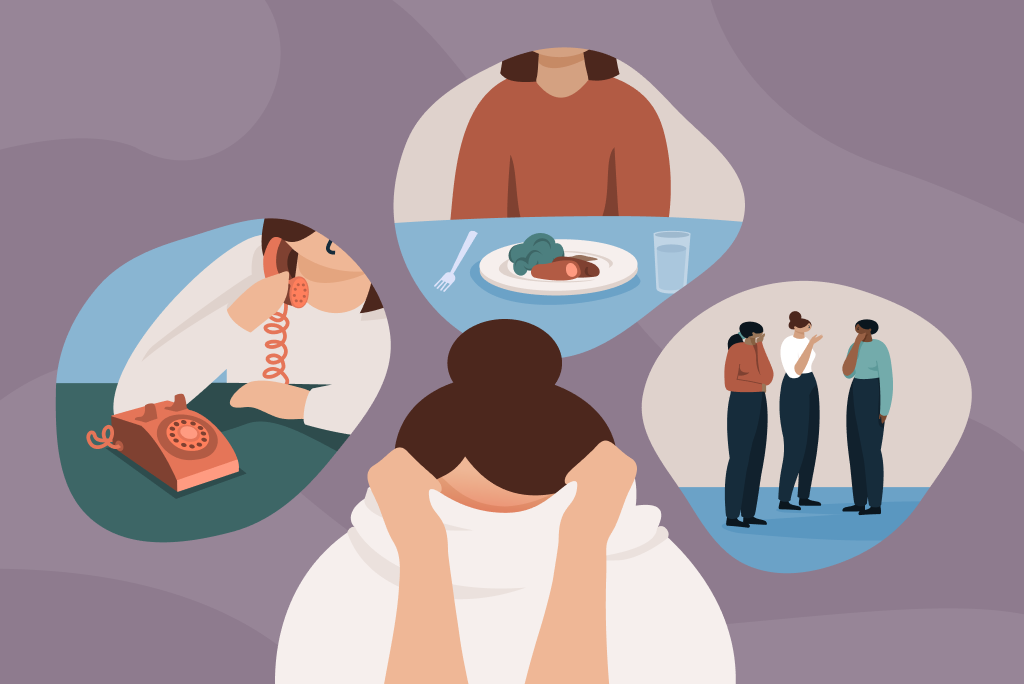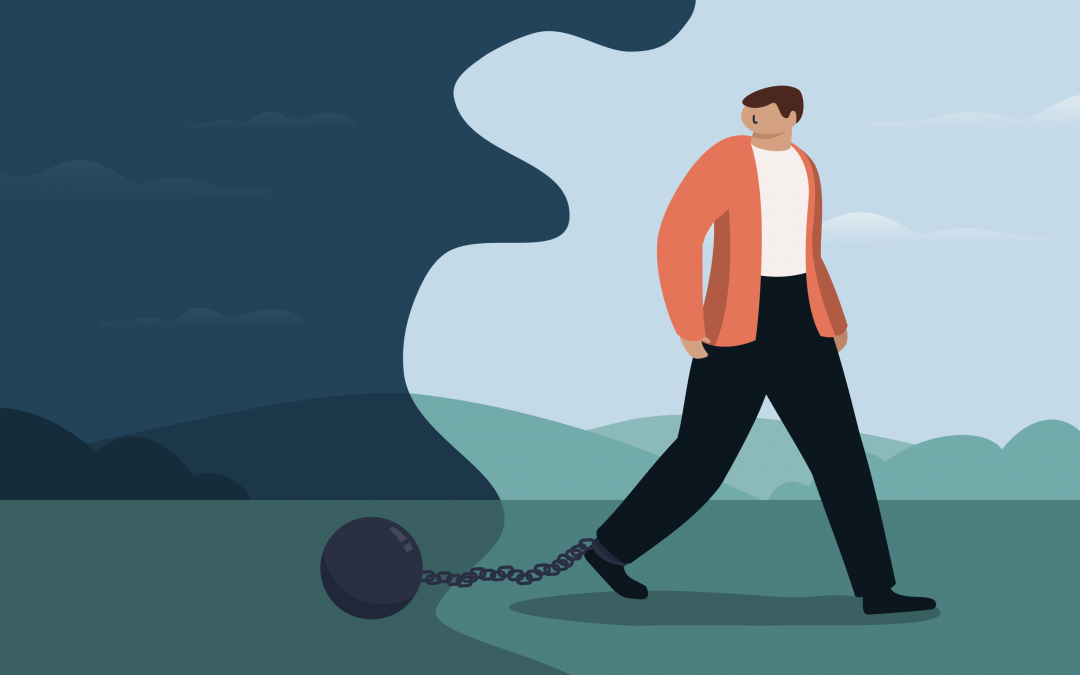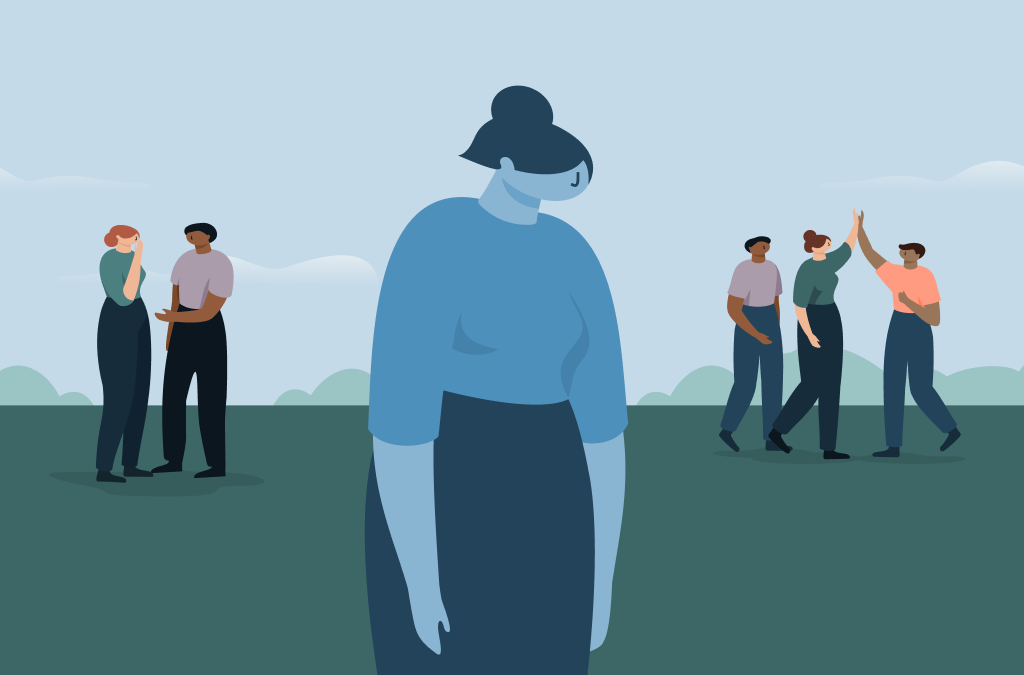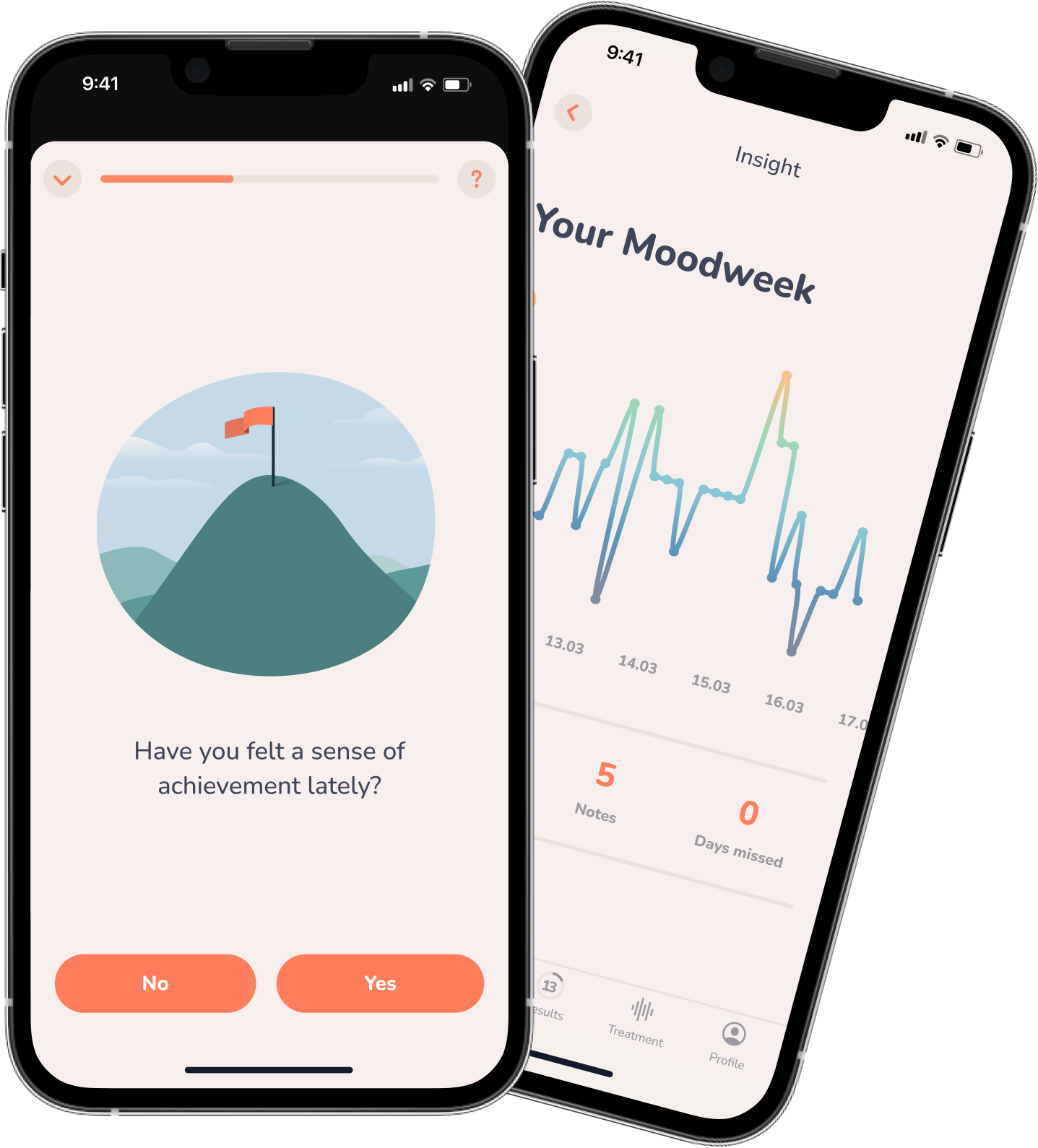Insight
Social Anxiety Disorder: When Fear of Being Judged Rules Your Life
Speaking up in a group of people? Talking on the phone in front of others? Attending a party where you hardly know anyone? Talking to a stranger? These and similar social situations tend to be challenging for many people: For some, such situations merely trigger a queasy feeling, while for others they cause full-on panic. This article explores characteristics and causes of social anxiety disorder (also known as “social phobia”) and takes a look as well at how it can be treated.

When does social discomfort become a disorder?
Most people have felt some amount of nervousness or anxiety in social situations. This is largely because humans are social beings. And for early homo sapiens, belonging to a group could mean the difference between survival or not. Groups offered protection and support. In short, being valued and accepted by others has been a central human need for a very long time. And yet what others do and think is largely out of an individual’s control and can, thus, be a source of anxiety.
The degree to which you might feel anxious in a social setting is important to pay attention to. Having a bit of excitement or some fluttering in your stomach in social situations at times is perfectly normal. Very few people would be able to walk into a room full of strangers, say, and start striking up conversations without having some amount of discomfort. Similarly, most people would feel quite nervous when having to give a speech in front of a group.
Where reactions can veer in the direction of a disorder, however, would be when the sense of fear is so extreme that the person’s daily life is impacted. Someone may, for example, feel such intense anxiety at the idea of meeting up with others that they choose to stay home or otherwise avoid such situations, thereby missing out on what otherwise could’ve been a positive experience.
Other signs that social anxiety disorder may be at play rather than just normal social discomfort may include one or more of the following:
- Anxiety leading up to a social event crops up hours, days, or even weeks ahead of time.
- Unrelenting stress arises around the idea of being in a social situation and is combined with muscle tension, a sleep disorder, and/or a sense of exhaustion.
- A fixation on one’s own behavior and physical reactions around others is present to a degree that leaves a very low bandwidth for other areas of life.
- Daily tasks, such as going to the supermarket alone, talking to co-workers, or making an important phone call no longer seem manageable.
What is the source of fear for those with social anxiety disorder?
For those with social anxiety disorder, it’s ultimately a fear of being negatively judged by others. There may be a fear of embarrassing oneself or acting awkwardly, or of being the center of attention. Activities like taking exams, eating, drinking, or talking on the phone in front of others are often anxiety-provoking. And for some, the anxiety crops up around very specific situations such as when having to speak in front of an audience.
What does a fear reaction look like?
When fear arises, the heart beats faster, muscles tense up, sweat glands get activated, and the blood supply to the skin increases. Some may experience full-blown panic attacks.
Sweating or blushing or otherwise reacting in ways visible to others can bring even more discomfort as the person worries what others will think of them. Thoughts may arise like, “They’re going to think something’s wrong with me,” “I’m sure I’ll stumble over my words and everyone will notice,” or “I can already feel myself blushing. How embarrassing!”
Extreme fear can bring a desire to avoid a stressful situation altogether, to run away from it, or to stay in the background in a particular situation as much as possible.
How common is social anxiety disorder?
Social anxiety disorder is one of the most prevalent among all mental disorders with one in ten experiencing a form of this disorder at some point in their life. And there are claims that this estimate is actually much lower than the reality since many with social anxiety disorder are ashamed of their fear or are uncomfortable talking about it with others so they remain silent.
Though this disorder can crop up at any age, it most commonly appears in childhood or adolescence.
What causes and prolongs social anxiety disorder?
Most of the time, the cause of any mental disorder is fairly complex, and social anxiety disorder is not unique in this regard. It’s usually, then, not just one trigger that sparks the disorder but is a combination of factors, such as genetic makeup, personality traits like perfectionism or shyness, childhood experiences such as being teased or often excluded, or one’s upbringing.
If one grew up with overprotective parents, for example, they may not have gotten the chance to learn how to cope with difficulty on their own. Alternatively, if someone’s parents were strict, critical, or demeaning, this person may have adopted the assumption that they themselves are not good enough. Both overprotective and over critical parenting styles can result in low self-esteem and heightened levels of anxiety and prepare the ground for the development of social anxiety disorder.
Once the disorder develops, a person may unknowingly prolong it through certain actions like avoidance and withdrawal which may bring some relief in the short run, but ultimately rob a person of opportunities for more positive experiences that often come with getting practice being around others. The other part of avoidance and withdrawal is that it can bring even more anxiety around the idea of social situations than was there originally, sparking off a vicious cycle.
How is social anxiety disorder treated?
Typically, social anxiety disorder does not resolve on its own, so it should be treated. Both psychotherapy (especially, cognitive behavioral therapy) and medication, have been shown to be effective. Typically in therapy, the practitioner will review with the patient how the disorder developed and whether any of their behaviors are prolonging it. The therapist may eventually support the person in confronting their fears—the most effective therapeutic treatment method—by having them seek out those social situations that usually bring the most fear. Participating in group therapy or a support group can also be beneficial. Group members can practice with one another in a safe setting and see that they’re not alone with the disorder.
If you’re experiencing social anxiety and notice that it’s affecting your life, we strongly recommend that you seek professional support. You don’t have to go through this alone.

Trauma Consequences: Post-Traumatic Stress Disorder (PTSD)
Traumatic experiences like accidents, violence, or severe illnesses are extremely stressful and can push people to their limits. As a result of trauma, some affected individuals develop post-traumatic stress disorder (PTSD).

People-Pleasing — When the Fear of Rejection Becomes a Trap
Are you a person who places a high value on kindness, consideration and helpfulness? Or … maybe you tend toward what’s called “people-pleasing”?

Psychological Needs in the Workplace: How to Meet Them
Deadlines, conflicts, pressure to perform—many people grapple with stressors at work. The extent to which these weigh on someone depends in large part on whether psychological needs are being met at work.

High-Functioning Depression: The Hidden Suffering
When people think of depression, usually intense sadness, low energy, social withdrawal, difficulty getting out of bed, and managing daily life come to mind. But this is not always the case.



